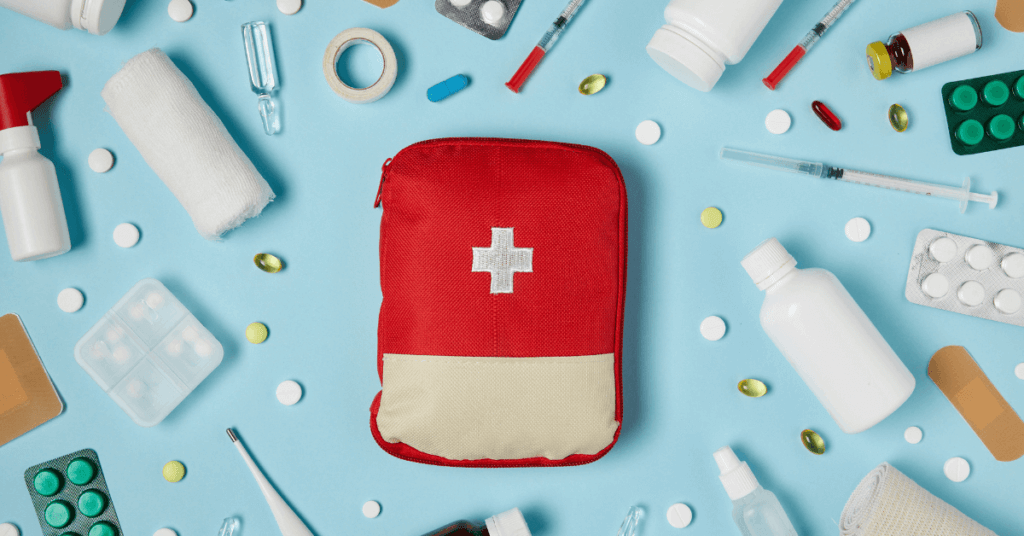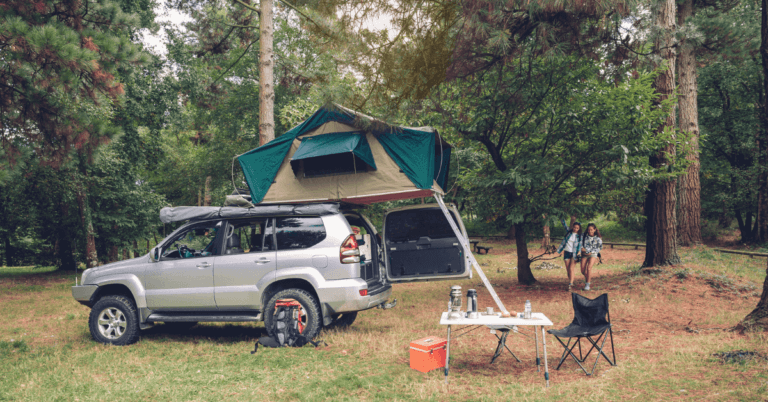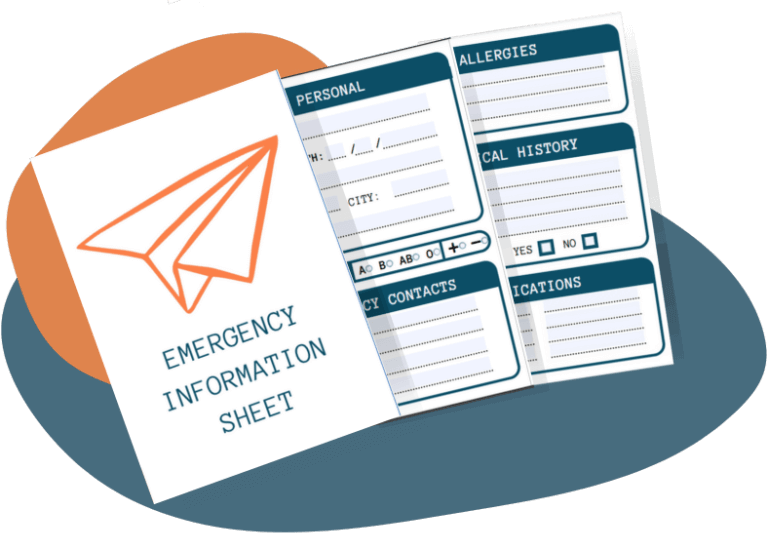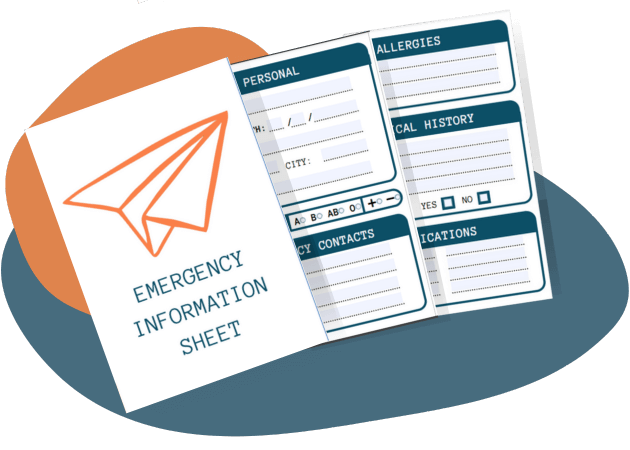Let’s discuss the five most common mistakes travelers make regarding their overlanding first aid kit.
During my time working as an ER nurse, I saw my fair share of accidents. One thing all these people had in common, is that they never thought it would happen to them.
It’s not necessary to spend your whole trip worrying about what could go wrong, or worse, let it prevent you from even going on an adventure, but it would be foolish not to prepare for accidents the best you can.
Already have a first aid kit? Great!
Let’s grab it and check if you are making any of these mistakes.
Location
–There is no point in having a first aid kit if you can’t find it. Go stand beside your car, and see how long it takes you to retrieve it. It should not be more than a few seconds.—
I used to be guilty of placing my first aid kit under the driver’s seat, but your kit should not be hidden.
There is no one perfect spot in your car to put your kit. This heavily depends on your vehicle’s set-up, but it should be in a highly visible, easily accessible location.
I prefer to put mine behind the passenger seat since it can be easily accessed by all passengers inside the car, but also from the outside through the back door.
Always let your travel companions know where you keep your first aid kit, and make sure you know where they keep theirs.
Material
Your first aid kit follows where you go, so it should be able to withstand all your adventures. Whether it’s a heavy-duty case or bag is up to your personal preference, but it should be water- and dustproof. To make it easily retrievable, the outside should be a bright color. A huge white cross makes it recognizable internationally.
The inside is where the magic truly happens, and it’s exactly here that most pre-packed first aid kits fail miserably.
The interior of your kit should consist of multiple see-through compartments, making it easy to group products together and sort them into categories, without compromising on visibility.
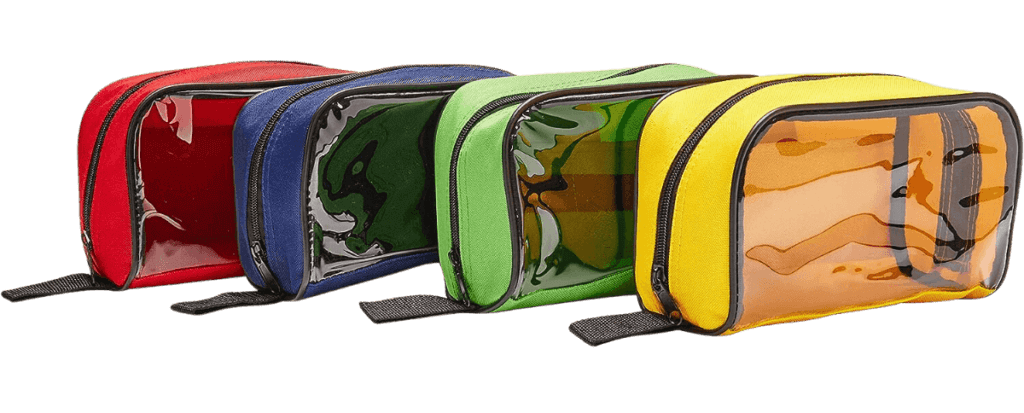
Another simple way to make your kit more organized is to add colors. A trick paramedics use is to assign a specific color to a category of products. For example, all wound care products get put in a green bag.
An easy way to apply this is by using color-coded pouches like these.

During a crisis, the human brain falls back to the essentials. Having assigned colors doesn’t only make it easier to remember what stuff you can find in which bag, but even small children can easily be instructed to go get a specific colored bag from your kit.
While you can memorize everything in your first aid kit and its location, there’s still a chance you’ll blackout in case of an emergency. So, it’s important to let the set-up of your kit work for you, not against you.
Content list
The easiest way to make your first aid kit less cluttered is to have a content list. This provides not only you but everyone who opens the kit, with an index of what’s inside. This overview also makes it possible to refill and check the kit efficiently.
If you assigned specific colors to your compartments, this too should be integrated into your content list. This way, the color coding can help bystanders quickly locate items, even if they’ve never opened your first aid kit before.
Familiarity
While the phrase ‘I’ve never done it before, so I must be good at it’‘ beams with positive energy, unfortunately, it doesn’t apply to first aid.
Most techniques are simple and can be taught easily, but they do involve taking the time to get familiar with the products you’re carrying in your kit and how to use them.
Especially when buying a ready-to-use first aid kit, a big pitfall most people fall into is that they just throw it in their car and never look at it again.
When buying a kit, or even better, assembling it yourself, you should go through its content, open the packages, practice using the tools inside, and really get a feel for the material.
There is no point in carrying something you don’t know how to use. If there is something you’re unfamiliar with, now is the time to do your research.
It is recommended to go through your first aid kit every month, or at least refresh your memory before leaving for an overland trip.
Expiration Date
Finally, the most common mistake when it comes to first aid kits is not checking the expiration date of your products.
In the best-case scenario, you won’t need to use your first aid kit much. This can lead to it becoming more like a piece of decoration than a possibly life-saving item. Not only medication can expire, but also antiseptics and the seal of sterile packing.

When you do your monthly walk-through of your first aid kit, try getting into the habit of also checking the expiration dates. Going through all the contents of your kit may seem dreadful, but since expired products may be less effective, or even unsafe to use, it’s an absolute necessity to throw them out and replace them.
A good first aid kit might sound complex, but making these minor adjustments can easily elevate your kit from basic to high quality.


